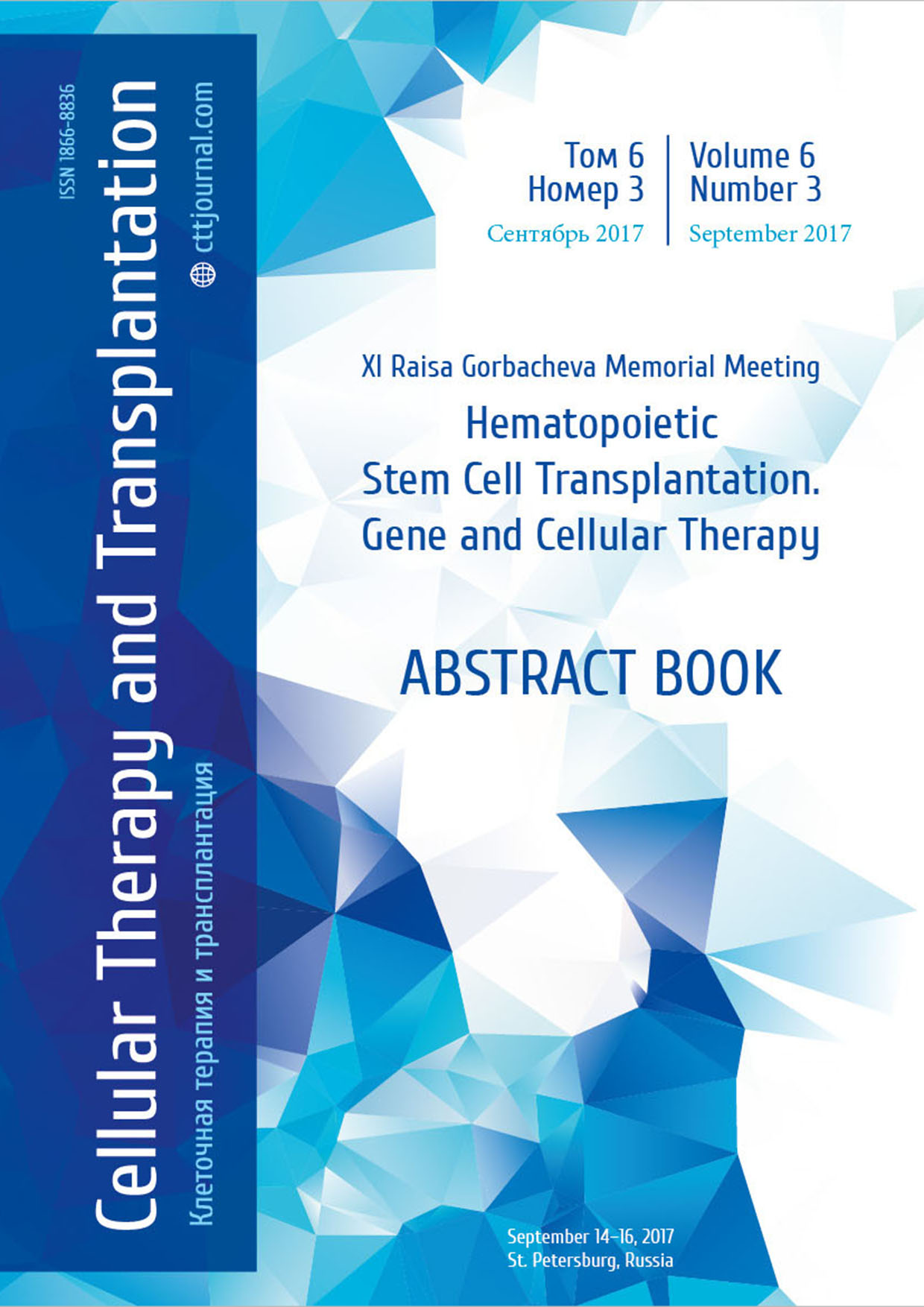Maria V. Barabanshikova, Elena V. Morozova, Ivan S. Moiseev, Julia J. Vlasova, Vadim V. Baykov, Ildar M. Barkhatov, Elena I. Darskaya, Sergey N. Bondarenko, Boris V. Afanasyev
Raisa Gorbacheva Memorial Institute of Children’s Oncology, Hematology and Transplantation, Chair of Hematology, Transfusiology and Transplantology, First I. Pavlov State Medical University of St. Petersburg
Summary
Introduction
Post-polycythemia vera, post-essential thrombocythemia and primary myelofibrosis (MF) are BCR-ABL–negative myeloproliferative disorders with progressive clinical course and usually poor prognosis. Allogeneic stem cell transplantation (alloHSCT) remains the only curative therapy in patients with MF. JAK1/JAK2 inhibitors represent a new therapeutic option in MF patients. Despite significant progress after JAK inhibitors introduction, it is clear that they don’t bear curative potential. Nonetheless they may improve the curative potential of alloHSCT. Here we evaluate our experience in alloHSCT in the patients with myelofibrosis treated during the last decade.
Patients and methods
We analyzed the results of alloHSCT in 27 patients aged 49 (30-61) years. Three patients were diagnosed with post-essential thrombocythemia myelofibrosis; four subjects had post-polycythemia vera myelofibrosis; 20 patients presented with primary myelofibrosis. By DIPSSplus, 46% (12) patients had intermediate-2, and 50% (13) patients had a high-risk disease. Two patients (4%) were transplanted in blast crisis. Molecular status was available in 22 patients. Among them, 72% (16 cases) harbored JAK2V617F mutation; 18% (4 patients) exhibited CALR mutation, and MPL mutation was found in 10% (2 cases) before alloHSCT. Seventeen patients were treated with JAK1/2 inhibitors including 2 subjects (12%) who received the drugs only before alloHSCT, and 88% (15) treated before and after alloHSCT. Median treatment duration was 6.4 (2.6-22.0) months. The disease stabilization was observed in 65% (11) of the patients; disease progression was detected in 12% (2), and 23% (4) patients achieved clinical improvement. In six patients, splenectomy was performed due to poor spleen response. A reduced intensity conditioning (fludarabine 180 mg/m2 plus busulfan 8-10 mg/kg) followed by alloHSCT was performed from unrelated (18), related (7), or haploidentical (2) donors. Fifteen patients received cyclophosphamide-based graft versus host prophylaxis (100 mg/kg at day +3, +4) and 12 patients have got antithymocytic globulin-based prophylaxis (ATGAM 60 mg/kg, or thymoglobulin 5 mg/kg) combined with tacrolimus/methotrexate, or tacrolimus/mophethyl-mycophenolate. Stem cell sources were G-CSF-mobilized peripheral blood progenitor cells (19), and bone marrow (8). Median number of infused CD34+cells was 6.5x106/kg (1.4 to 11.9).
Results
Median follow-up was 10 months (1.2-56.1). Primary engraftment was documented in 24 patients. Median time to leukocyte engraftment was 27 (17-230) days, to the platelet engraftment, 30 days (17-230). Three patients experienced primary graft failure and died due to infection (2) and disease progression (1). In three cases, the stem cell “boost” was administered due to poor graft function. Severe sepsis was documented in 5 patients. Viral reactivation was registered in 37%. Moderate hemorrhagic cystitis occurred in 4 patients. Twenty nine percent experienced acute GVHD grade 2-4, chronic GVHD was documented in 41%, in 5 cases it was classified as moderate (NIH criteria). Two patients developed hematological relapse. One patient was treated with donor lymphocyte infusion and chemotherapy and died due to the disease progression. Another one received DLI and ruxolitinib and achieved disease stabilization. Nine patients died after alloHSCT: from acute GVHD (2), from infection (3), from poor graft function/infection (2), from disease progression (2). Eighty nine percent of patients achieved hematological remission; 81%, full donor chimerism; 91%, molecular remission; 81%, bone marrow fibrosis regression from grade 2-3 to 0-1. The two-year overall survival was 73% whereas progression-free survival at two years was 69%. OS was significantly influenced by a year of transplantation: the 2-year OS over the 2005 to 2014 period versus the 2015 to 2017 was, respectively, 22% versus 100% (p=0.0001).
Conclusion
AlloHSCT is effective treatment modality for myelofibrosis. Pretransplant therapy and GVHD prophylaxis modification may improve the outcomes of alloHSCT.
Keywords
Myelofibrosis, allo-HSCT, JAK inhibitors, GVHD prophylaxis, outcomes.


